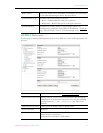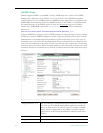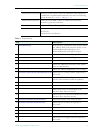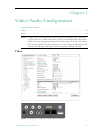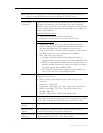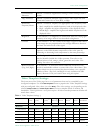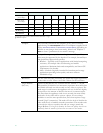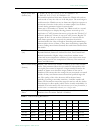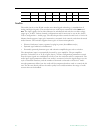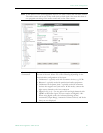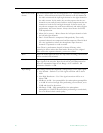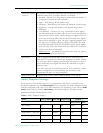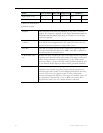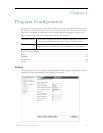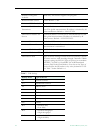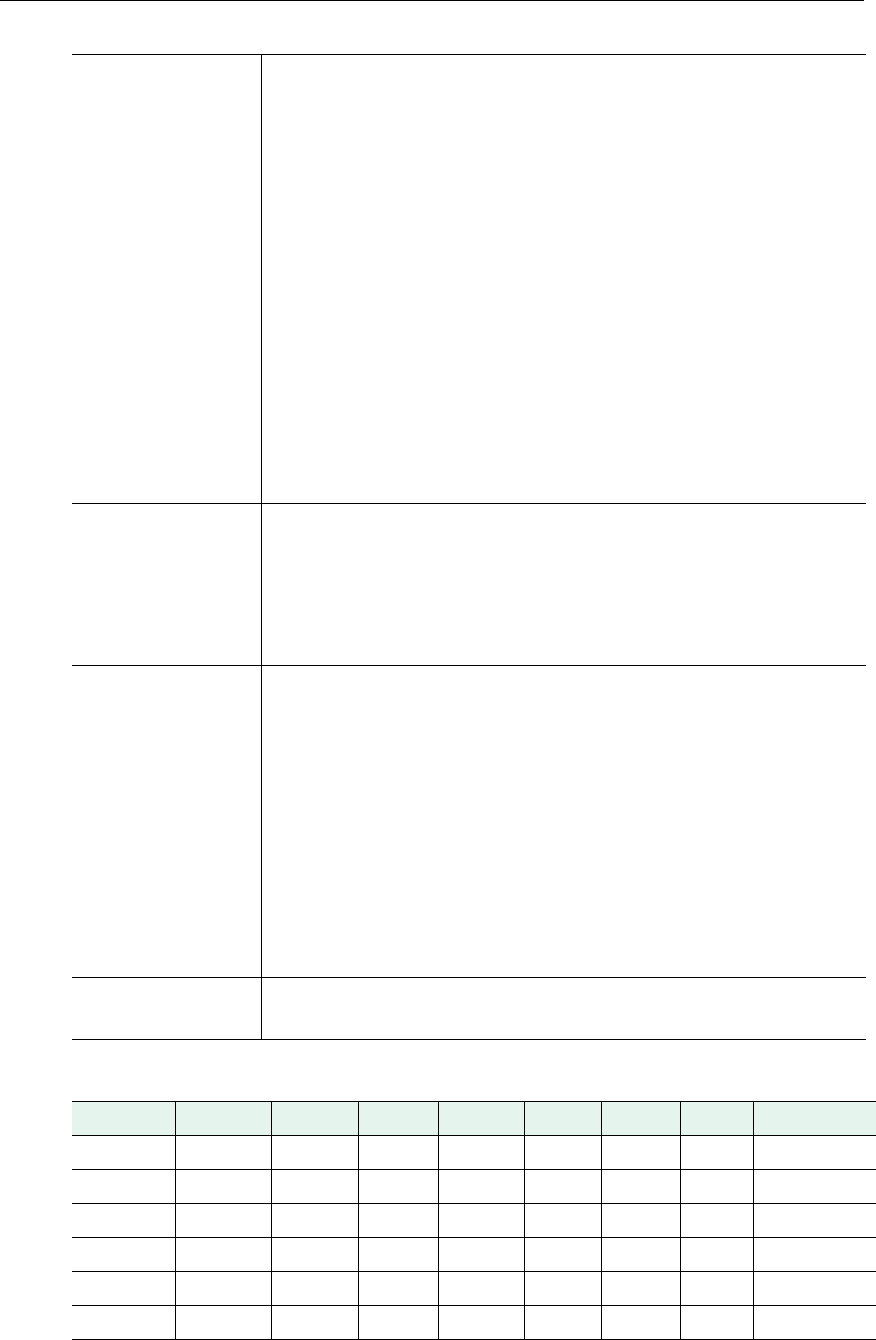
Video/Audio Configuration
VBrick H.264 Appliance Admin Guide 37
Table 5. Video Encoding Resolutions
Target Frame Rate
(frames/sec)
• NTSC: 30, 15, 10, 7.5, 6, 5, 3, 2, 1, 0.5. Default = 30.
•PAL: 25, 12.5, 5, 2.5, 1, 0.5. Default = 25.
This number represents how many frames the VBrick will send out
each second to carry the video to an H.264 player. The word target is
used because the VBrick can vary its frame rate slightly in response to
the amount of motion in the movie or camera output. See the Rate
Control Setting parameter below for more details.
Frame rate is the number of "frames" the VBrick sends in a second
for an H.264 player to display. Moving pictures are made up of a
rapid series of "still" pictures that move so fast that the "illusion" of
motion is produced. A frame is one such "still" picture. Regular TV
programs in the U.S. run at about 30 frames in a second; and the
more frames presented in a second; the smoother the motion
contained within the video will appear. Encoding and transmitting a
frame requires the use of data, so that, when considering a particular
bit rate, sending more frames demands that each frame contain fewer
fine details.
IDR Frame Interval
(sec)
0–30. Default = 4. The frequency in seconds at which IDR (Intra
Dynamic Refresh) frames are inserted for Seek, Fast Forward and
Rewind functionality. Higher values create fewer random access
points and better compression efficiency. Lower values create more
access points but with less compression efficiency. Zero means all
frames are IDR frames.
Rate Control Setting
(frames)
Default = 60. The size (in number of frames) of the video encoder
buffer. This parameter allows lets you trade-off video quality with
how tightly rate control is imposed. A larger number increases the
number of frames over which the target number of bits can be
distributed. This means that the average bit rate, measured over small
periods of time, can fluctuate more around the specified target bit
rate. The quality of the video however will be adjusted more
gradually, providing a smoother transition. A smaller number will
reduce the fluctuations around the target bit rate but will also lead to
faster changes in video quality (which can be visually undesirable). In
bandwidth-restricted networks with little tolerance for bit rate fluctuations, a
smaller value is recommended; otherwise, use a larger value.
In-loop DeBlocking
Filter
Reduces blocking artifacts but may introduce a mild but undesirable
blurriness into the stream. Default = Enabled.
NTSC (16:9) NTSC (4:3) PAL (16:9) PAL (4:3) 480i (16:9) 480i (4:3) 576 (16:9) 576 (4:3) 720/1080 (16:9)
720x480 720x480 720x576 720x576 720x480 720x480 720x576 720x576 1280x720
656x368 640x480 656x368 640x480 656x368 640x480 656x368 640x480 960x544
352x240 400x304 512x288 400x304 256x144 400x304 512x288 400x304 720x576
256x144 352x240 352x288 384x288 320x240 256x144 384x288 720x480
176x128 320x240 256x144 352x288 192x144 320x240 656x368
192x144 320x240 128x96 192x144 512x288



